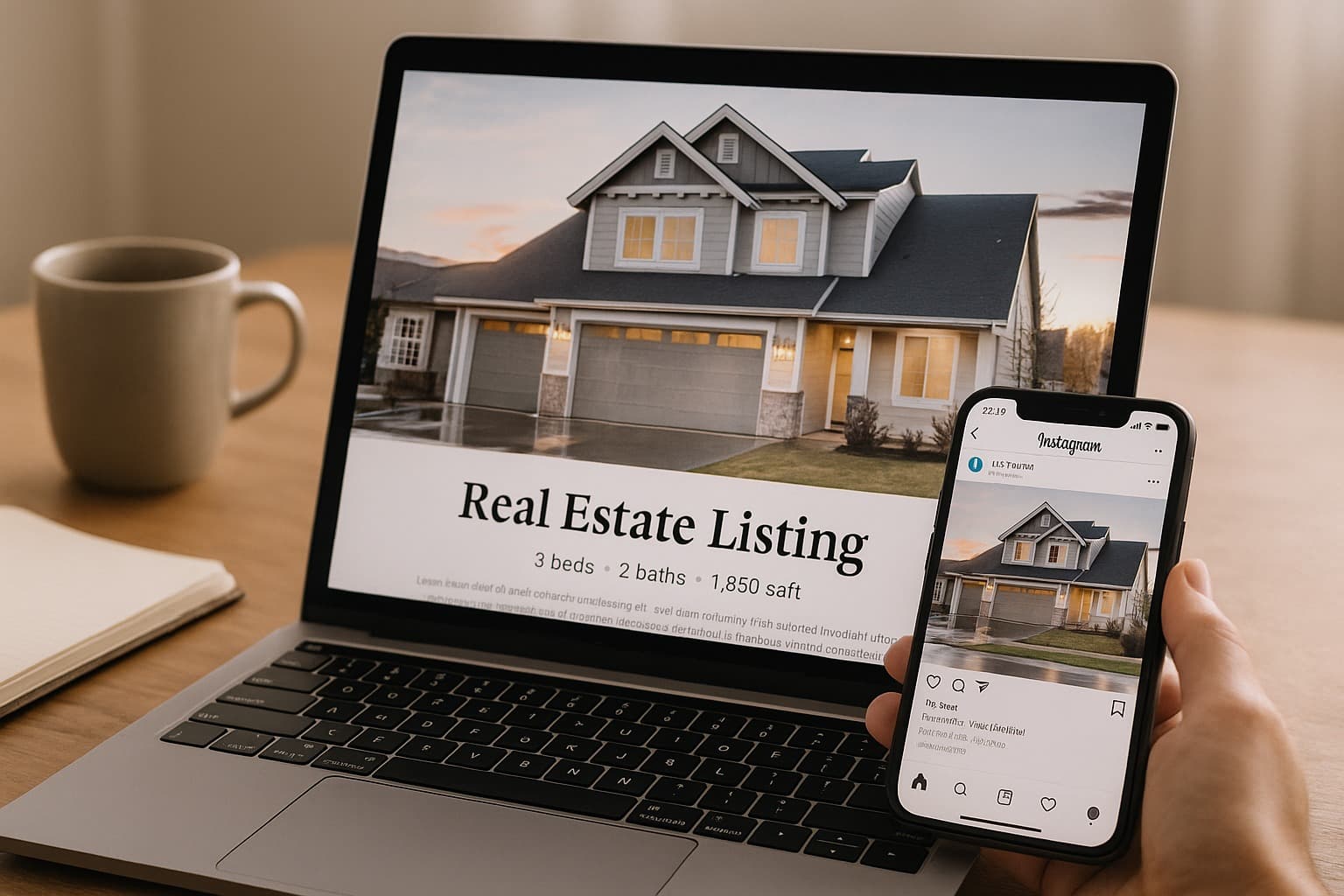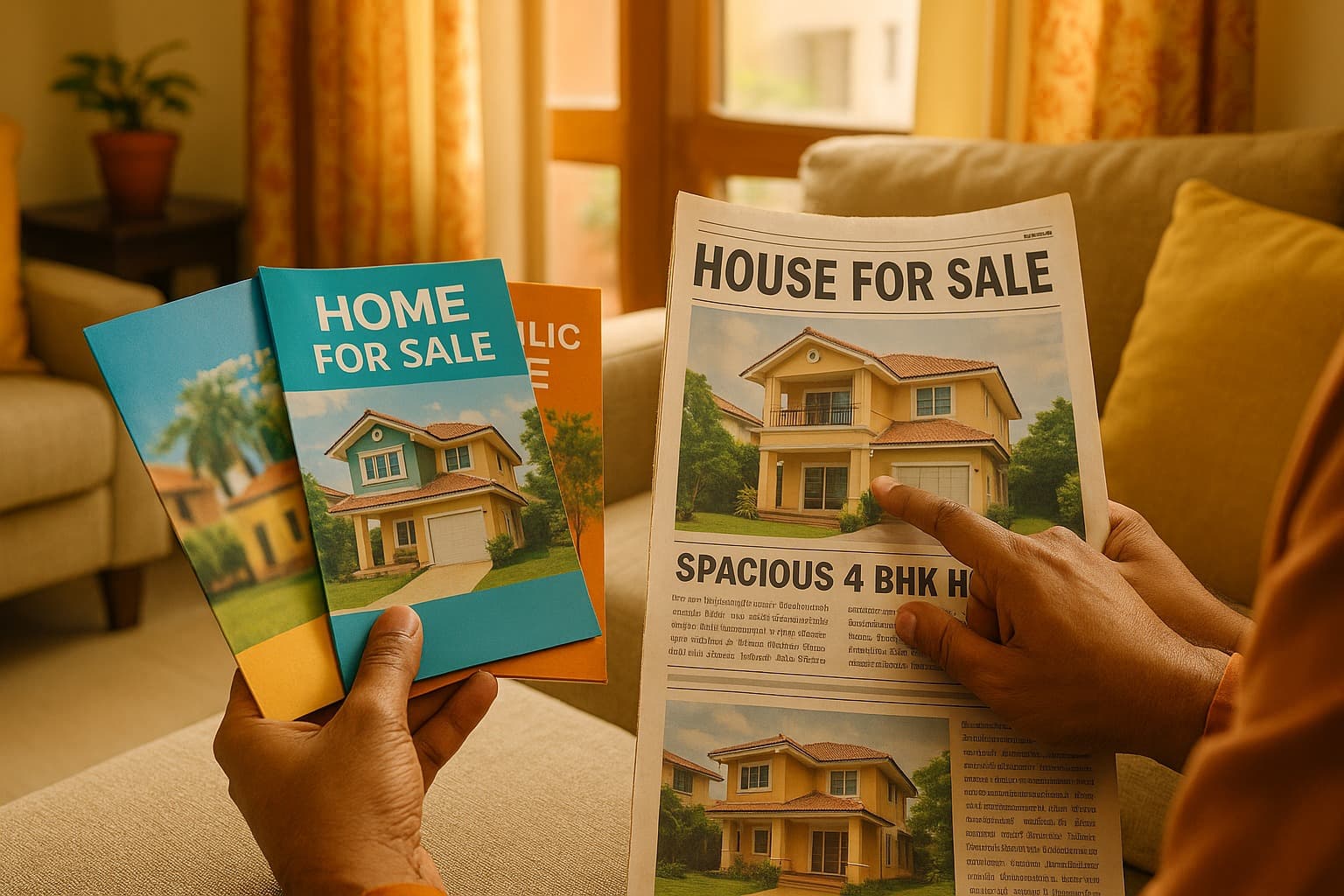How to Market Your Home Effectively: Online, Social Media, and Print Strategies
Summary
Effectively market your home by combining online listings, social media engagement, and print strategies. Create compelling listings, leverage virtual tours, stage your home, and collaborate with agents to maximize visibility and attract serious buyers.

How to Market Your Home (Online, Social Media, Print)?
Selling a home is more than just listing it online and hoping someone calls. It’s about telling a story—your home’s story—while reaching the right buyers at the right time. The process can feel overwhelming, especially if it’s your first time selling. But with the right marketing strategy, you can make your home stand out, attract serious buyers, and even get a better price. In India today, marketing a home effectively means combining online platforms, social media, and traditional print methods. Let’s explore how to do this in a way that feels natural, human, and effective.
1. Start with a Strong Online Presence
Most homebuyers in India start their search online. Platforms like Magicbricks, 99acres, Housing.com, and even Google Maps are often the first places they look. That’s why a compelling online listing is essential.
High-quality photos:
A picture is worth a thousand words. Invest in good photography—whether professional or DIY with natural light. Highlight bright rooms, spacious areas, balconies, gardens, or any unique features. Avoid clutter and ensure every room looks inviting.
Detailed and honest descriptions:
Don’t just say “beautiful apartment.” Instead, write about the lifestyle it offers. For example: “Enjoy morning coffee on your balcony overlooking serene green spaces in this 3BHK in Pune.” Include square footage, number of bedrooms, amenities, nearby schools, and transport connectivity. Detailed listings build trust and attract serious buyers.
Engaging titles:
A catchy, honest title can make your listing stand out among hundreds. “Spacious 2BHK with Park View Near Metro Station” is clearer and more attractive than simply “Flat for Sale.”
Your online listing is your first impression, so make it count. It’s often what convinces buyers to visit in person or schedule a call.
2. Harness the Power of Social Media
Social media isn’t just for fun; it’s a powerful way to market your property. Platforms like Facebook, Instagram, LinkedIn, and WhatsApp let you reach both local buyers and distant prospects.
Facebook and Instagram:
Share your property with high-quality images, videos, and stories. Join local property groups or city-specific communities. Paid ads can help target buyers based on location, income, or interests.
LinkedIn:
Particularly useful for professionals in corporate hubs. Share posts highlighting your property’s features, nearby amenities, and connectivity.

WhatsApp:
Forward brochures, photos, and videos to friends, family, and groups. Personal recommendations still work incredibly well in India.
The key is consistent engagement. Respond to inquiries quickly, follow up politely, and share updates regularly. Social media creates a personal connection between you and potential buyers that goes beyond just a listing.
3. Create Video Tours and Virtual Walkthroughs
Not everyone can visit your home in person, especially NRIs or busy professionals. A video tour or 3D walkthrough allows buyers to experience the home from anywhere.
Highlight key areas:
Show the living room, bedrooms, kitchen, bathrooms, and outdoor spaces. Keep the video smooth and organized.
Keep it concise:
A 2–3 minute video is ideal—long enough to showcase the home, short enough to maintain attention.
Share widely:
Post on YouTube, social media, and property portals. Embedding videos in listings dramatically increases engagement.
Virtual tours also help filter serious buyers. People who watch the video and like the property are more likely to visit in person and make an offer.
4. Don’t Forget Print Marketing
Even in the digital age, traditional print marketing still has a place, especially in certain communities and among older buyers.
Newspaper listings:
Local newspapers attract buyers who may not actively browse online. Include a few quality images, a concise description, and your contact info.
Brochures and flyers:
Hand these out during open houses, display in local cafes, or send via mail to targeted neighborhoods.
Community notice boards:
Residential societies, local clubs, or municipal boards often allow property postings. This reaches people already familiar with the area.
Print marketing reinforces your online presence and reaches audiences that digital channels alone might miss.
5. Stage Your Home and Organize Showings
Nothing replaces the emotional impact of seeing a home in person. Proper staging and showings can make a big difference.
Declutter and depersonalize:
Remove personal photos and excessive items so buyers can visualize themselves living there.
Highlight key features:
Arrange furniture to showcase space, natural light, and flow. Add small touches like fresh flowers, scented candles, or a clean, welcoming environment.
Schedule thoughtfully:
Weekends or post-work hours generally attract more buyers.

Follow up:
Keep a record of visitors and follow up promptly. Even if someone doesn’t buy immediately, they may refer others or return with a decision later.
A well-staged home paired with an organized showing leaves a lasting impression that photos alone cannot convey.
6. Collaborate with a Real Estate Agent
A knowledgeable agent can expand your marketing reach and handle complex logistics:
Network access:
Agents have connections with buyers, other agents, and corporate clients.
Professional marketing resources:
Many provide high-quality photography, social media campaigns, and virtual tours.
Negotiation and guidance:
They help price your home accurately and handle inquiries professionally.
Working with the right agent ensures your marketing strategy is comprehensive, targeted, and professional.
7. Track Your Marketing Efforts
Marketing isn’t a “set it and forget it” task. Keep track of which platforms, posts, or ads generate inquiries. Monitor buyer interest and adjust your approach if needed. Being responsive and adaptable ensures your home remains visible and appealing throughout the selling process.
8. Emotional Connection Matters
Selling a home is an emotional journey. Buyers aren’t just buying a building—they’re buying memories, comfort, and a lifestyle. Marketing your home with warmth, honesty, and care creates an emotional connection that can turn viewers into buyers. A sincere listing that communicates the home’s charm can make all the difference.
9. Summary (100 words)
Marketing a home effectively requires a blend of online, social media, and print strategies. Start with detailed online listings featuring professional photos and clear, compelling descriptions. Leverage platforms like Facebook, Instagram, LinkedIn, and WhatsApp to reach a wider audience and engage buyers personally. Incorporate video tours or virtual walkthroughs to showcase your home remotely. Complement digital efforts with print media such as newspapers, brochures, and community boards. Stage your home for in-person visits, work with a trusted agent, and track engagement to refine your strategy. Combining these approaches increases visibility, builds buyer trust, and helps sell your property faster and more profitably.
